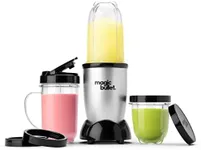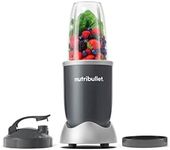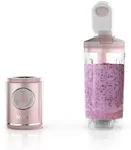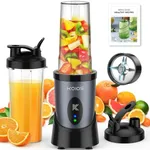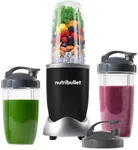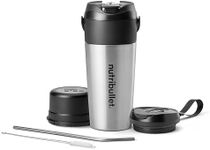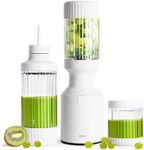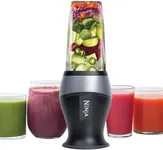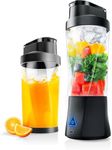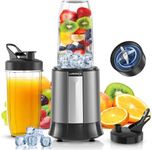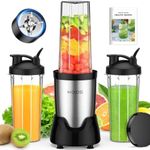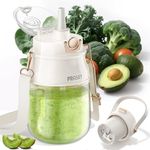Buying Guide for the Best Portable Blenders
Choosing the right portable blender can make a big difference in your daily routine, whether you're making smoothies, protein shakes, or baby food. The key is to understand the various features and specifications that can affect performance, convenience, and durability. By focusing on these aspects, you can find a portable blender that fits your lifestyle and needs perfectly.Battery LifeBattery life refers to how long the blender can operate on a single charge. This is important because it determines how many uses you can get before needing to recharge. Battery life can range from a few uses to several dozen. If you plan to use your blender frequently or take it on trips, look for a model with a longer battery life. For occasional use, a shorter battery life may be sufficient.
Motor PowerMotor power, measured in watts, indicates how strong the blender's motor is. This affects how well it can blend tough ingredients like ice, frozen fruits, and nuts. Motor power can range from around 100 watts to over 300 watts. For simple tasks like blending soft fruits, a lower wattage is fine. For more demanding tasks, such as crushing ice or making nut butter, a higher wattage is better.
Blade QualityBlade quality determines how effectively the blender can chop and blend ingredients. High-quality blades are usually made of stainless steel and are designed to stay sharp over time. Look for blenders with durable, sharp blades if you plan to blend a variety of ingredients. If you only need to blend soft items, blade quality may be less critical.
CapacityCapacity refers to the volume of the blender's container, usually measured in ounces or milliliters. This is important because it determines how much you can blend at once. Capacities can range from around 10 ounces to over 20 ounces. Choose a capacity that matches your typical serving size. For single servings, a smaller capacity is sufficient. For larger portions or multiple servings, a larger capacity is better.
PortabilityPortability includes the size, weight, and design of the blender, which affect how easy it is to carry and use on the go. A more portable blender will be lightweight, compact, and may come with features like a travel lid. If you plan to take your blender to work, the gym, or on trips, prioritize portability. If you will mostly use it at home, portability may be less important.
Ease of CleaningEase of cleaning is about how simple it is to clean the blender after use. Some blenders have dishwasher-safe parts, while others require hand washing. Look for blenders with detachable blades and containers that are easy to clean. If you want to save time and effort, choose a model that is dishwasher safe. If you don't mind hand washing, this may be less of a concern.
DurabilityDurability refers to how well the blender can withstand regular use without breaking down. This is influenced by the quality of materials and construction. A durable blender will last longer and provide better value. If you plan to use your blender frequently, invest in a model known for its durability. For occasional use, durability may be less critical.
